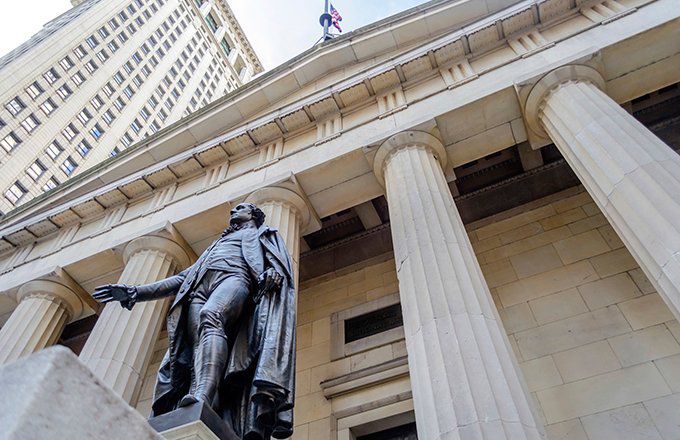
Two broadly recognized functions of investment banks include capital market intermediation and trading, distinguishing investment banks from commercial banks, which accept deposits and make loans. Investment banks are critical agents of capital formation and price setting. They help to coordinate present and future consumption.
Key Takeaways
- Investment banks are large financial institutions providing capital financing and engaging in trading.
- They help companies go public and underwrite bond offerings.
- Investment banks help the broader financial markets and the economy by matching sellers and investors.
- The banks make financial development more efficient and promote business growth, which in turn helps the economy.
Investment Banks vs. Commercial Banks
In 1933, the U.S. Congress passed the Glass-Steagall Act, which created a legal distinction between the operations of an investment bank and a commercial bank. It became illegal for any company to act as both an investment and commercial bank or for any holding company to hold associate companies of both kinds.
Investment banks could no longer accept deposits or make loans. Commercial banks could no longer have security interests in the U.S., although no such restrictions applied to foreign investments. These barriers eased with the Gramm-Leach-Bliley Act of 1999, but the U.S. remains the only country to have legally separated investment and commercial banking.
The Gramm-Leach-Bliley Act redesigned the regulatory structure by repealing aspects of the Glass-Steagall Act. The Gramm-Leach-Bliley Act reformed the financial services industry and addressed concerns relating to consumer financial privacy.
The Gramm-Leach-Bliley Act redesigned the regulatory structure by repealing aspects of the Glass-Steagall Act. The Gramm-Leach-Bliley Act reformed the financial services industry and addressed concerns relating to consumer financial privacy.
Role of Investment Banks
In contemporary mixed economies, governments and large companies rely on investment banks to raise funds. Investment banks match those selling securities with investors. This is known as “adding liquidity” to a market. Investment banks work with commercial banks to help determine prevailing market interest rates.
Even though there are different interest rates for commercial and investment products, all interest rates influence each other. For example, if it were possible to earn 2% interest on a two-year certificate of deposit or 4% interest on a two-year Treasury, investors would drive up the price of Treasurys and move away from bonds. In this way, interest rates tend to move toward each other.
The market rates of interest also determine how profitable it is to save and how expensive it is to borrow. This helps coordinate the use of resources across time. When interest rates are high, more money is saved for future consumption. The opposite is true when rates are low. The more efficiently investment banks establish market rates of interest, the more efficiently resources can be coordinated between the present and future needs.
What Is the Role of an Investment Banker?
Acting as intermediaries, investment bankers are rewarded as middlemen. They match producers with savers and help financial development become more efficient and businesses grow.
What Prompted Passage of the Glass-Steagall Act?
The Banking Act of 1933, also known as the Glass–Steagall Act, was passed following the 1929 stock market crash that started the Great Depression. Under the law, commercial banks could no longer underwrite securities except those issued by federal, state, and local governments. The legislation prohibited investment banks from accepting deposits.
What Are the Largest Investment Banks in the United States?
As of 2023, the three largest investment banks in the U.S. by revenue were J.P. Morgan Chase, Goldman Sachs, and Bank of America.
The Bottom Line
Investment banks act as intermediaries between a corporation and the financial markets and help corporations issue shares of stock in an IPO. They arrange debt financing for corporations by finding large-scale investors for corporate bonds. Investment bank clients may include corporations, pension funds, other financial institutions, governments, and hedge funds.





